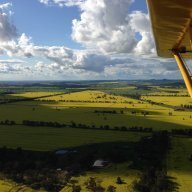Provided RAAus continue down the path of effective self regulation (self auditing, improvement and learning from past mistakes) I see a strong future for the organisation. GA will continue down the path of demise, CASR Part 61/141 will see to that. RAAus need to make the transition from GA as easy as possible, minimal / no exams and competency based along the lines of the RPL transition (ie issue an RPC, same endorsements as GA licence, type transition training based on competency and a flight review). There needs to be a greater emphasis on education rather than regulation, this needs to be guided by the safety stats once they can be analysed properly. This is an opportunity RAAus needs to grab and run with now. The technical side of things needs to be sorted before any increase in MTOW is considered. The Tech Manual is way out of date and not relevant to the modern types entering service. There's no objective assessment, recognition or training path for maintainers, this will stop the heavier aircraft being accepted. CASA has been seeking this for many years, they will have zero interest in weight increases until RAAus can demonstrate a proper system of maintenance. This system should accommodate the range of types operated, including the builders own schedule to the manufacturers requirements, there's not a one size fits all system and it will be difficult to create that without some members being adversely affected.
So, the future of RAAus looks good provided it's managed properly.





